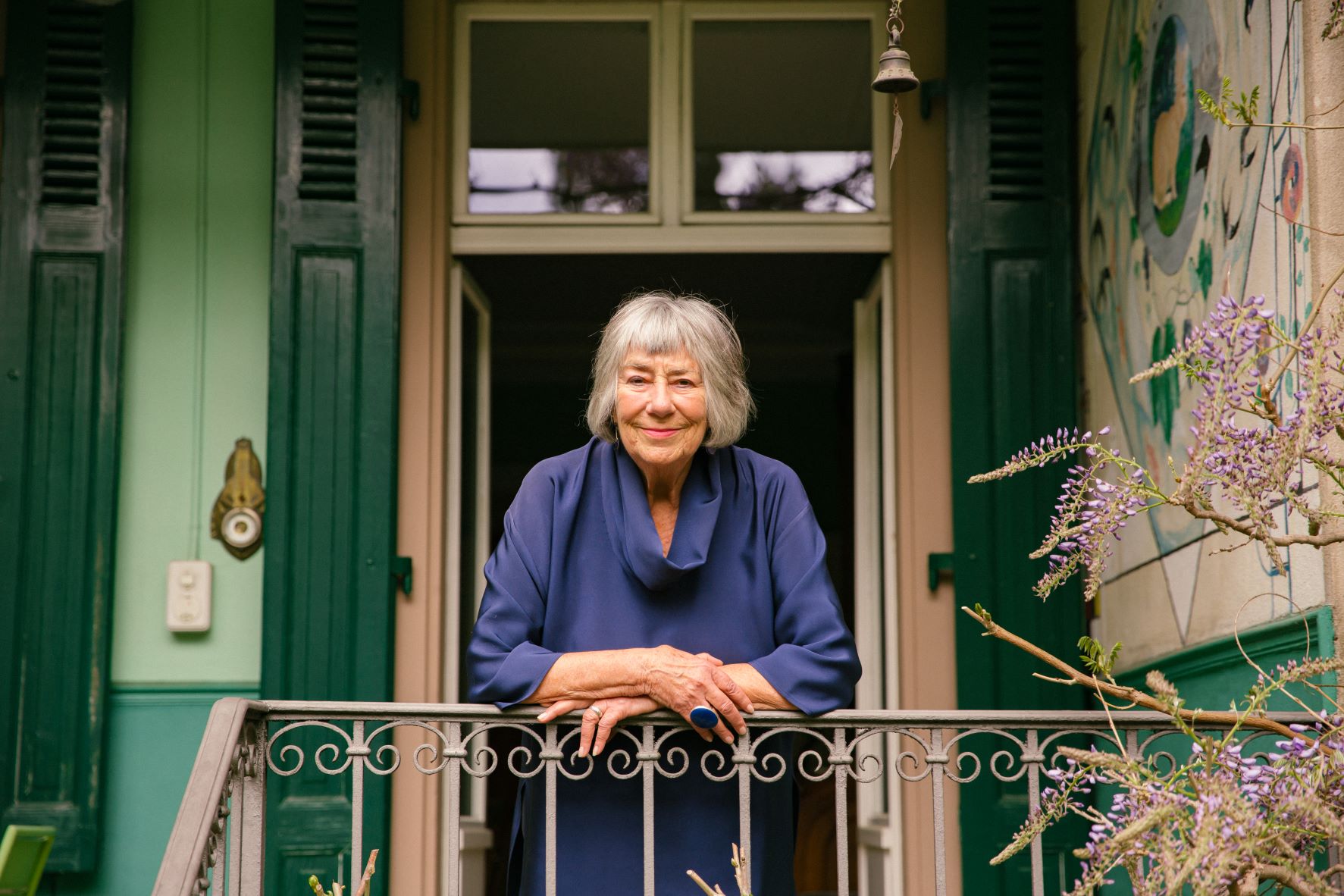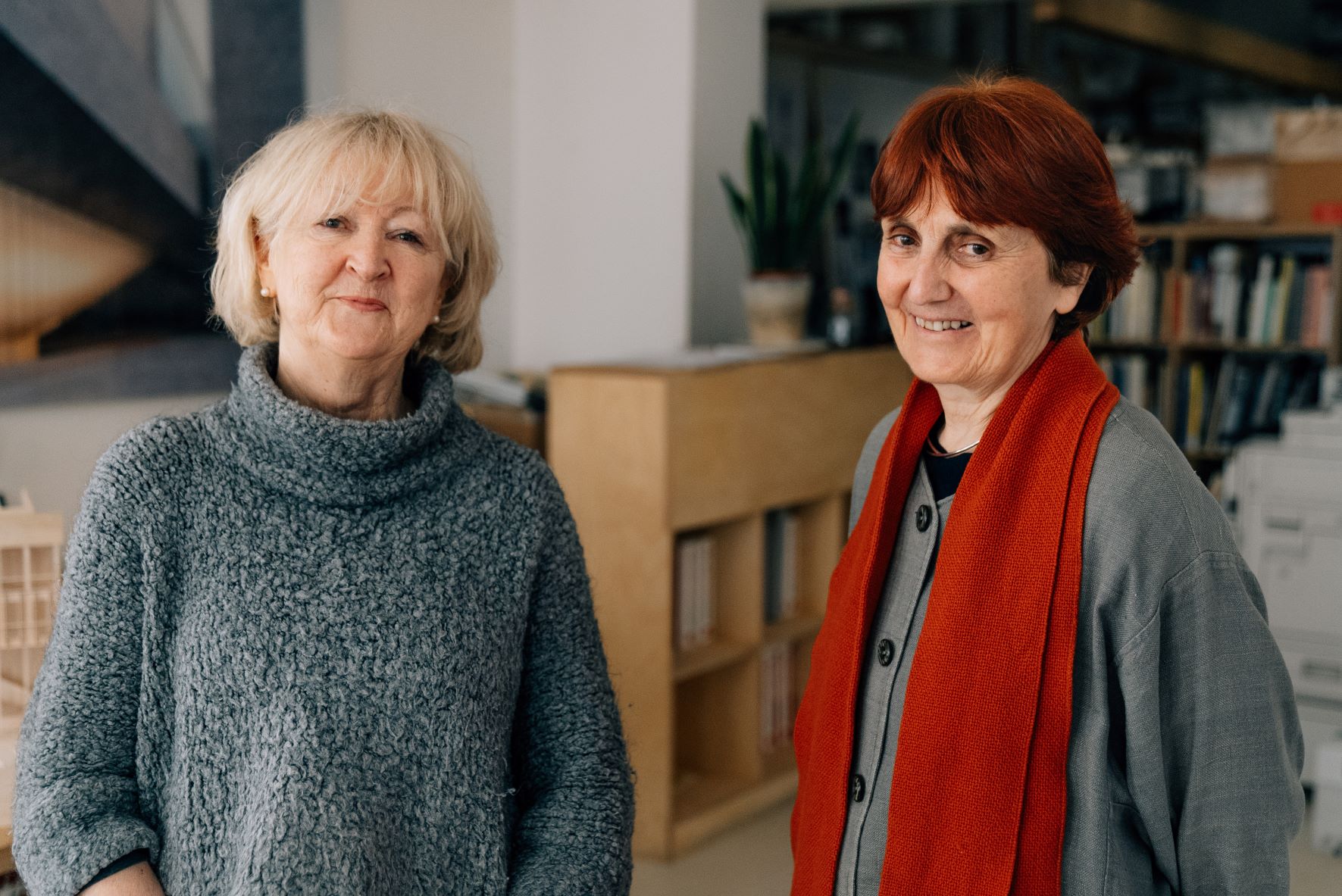The Daylight Award in 2022 goes to Anna Wirz-Justice for her research and to Yvonne Farrell and Shelley McNamara of Grafton Architects for their architecture.
The Daylight Award strives to raise a holistic understanding of daylight, and increase its positive impact on life. It honours and supports daylight research and daylight in architecture. The award acknowledges and encourages scientific knowledge and practical application of daylight, which interlink disciplines that are usually addressed in separated, monocultural spheres, professional circles or practices. It is a joint initiative of the VELUX Foundations in Denmark and Velux Stiftung in Switzerland.
“The 2022 laureates exemplify common themes. Not only do they represent international excellence in daylight research and practice, but they also embody a generous and humanistic spirit regarding the celebration of daylight. The contribution of daylight to enhance quality of life – even to celebrate life – is an intrinsic quality of their work. It is remarkable how they have applied this humanistic approach with a depth of knowledge and breadth of intentions that belies their humble and detached vision of their works’ importance” – states the jury.
The Daylight Award for Research:
Anna Wirz-Justice
Anna Wirz-Justice has undertaken pioneering research on how human circadian rhythms and sleep are regulated by light. Defining the key parameters of how light acts as a biological stimulus, including the importance of when we see light, how long we see it, and of what intensity and colour spectrum.
“The Daylight Award for Daylight Research is a great surprise and a great honour, for which I am extremely grateful, since it highlights our field of chronobiology, and the growing knowledge of how crucial daylight is for our health and wellbeing. I have had the fortune to live and work in an extraordinary era where the science of biological rhythms came of age” – says Anna Wirz-Justice the occasion of receiving the award.
Working in a psychiatric clinic, Anna appreciated the connections between abnormal light exposure, circadian rhythm disruption, and the impact this has on mental health. She introduced the use of light therapy to Europe and studied its use in Seasonal Affective Disorder (SAD), non-seasonal depression, Borderline Personality Disorder and dementia. This work allowed Anna, and other groups around the world, to establish both the scientific and therapeutic application of light as a treatment for different areas of mental illness. This holistic approach led Anna and colleagues to write a manual for health care professionals, thereby guiding evidence-based light treatment to improve mood and sleep disorders.
Research on light’s widespread effects on humans has changed architecture in the last decade
Anna Wirz-Justice has embedded her science broadly across the public sector. She has, and continues to reach out to numerous other fields in both the natural and humanistic sciences, to convey the importance of the natural day-night cycle on our psyche and physiology, including through architecture and the world of art. She has been the driving force behind multiple public lectures, exhibitions, installations, and architecture projects.
“Research on light’s widespread effects on humans, independent of vision, has changed architecture in the last decade. It has initiated new lighting standards to incorporate non-visual effects of light as necessary for health. It has re-awakened interest in the huge potential of daylight to complement artificial light” – Anna Wirz-Justice emphasizes.
Light is essential for health, regulating many aspects of our physiology, not least our circadian rhythms and sleep/wake cycles. Appropriate light exposure synchronizes the circadian timing system, allowing us to respond optimally to the varied and profound demands of the day/night cycle. Without this daily synchronization, circadian timing systems become misaligned with each other and with the outer world. The consequences of circadian dysregulation include fluctuations in mood, irritability, impulsivity, and reduced concentration, alertness, performance, and creativity. Long-term, there is an increased risk of cardiovascular disease, obesity, Type 2 diabetes, cancer, and mental illness.
“Recovery from illness can be accelerated by enhanced exposure to daylight. We and many others have collaborated with architects in new hospitals or retirement homes. Schools and workplaces also need enough access to daylight. If young children spend time outside every day, this seems to be a simple strategy to prevent myopia. So, I think we have reached a level of knowledge whereby chronobiologists and architects can talk to each other to improve the quality of the built environment with respect to the health-enhancing effects of daylight” – concludes Anna Wirz-Justice.

The Daylight Award for Architecture:
Yvonne Farrell and Shelley McNamara, Grafton Architects
Grafton Architects have mastered the use of daylight throughout their wide and exceptionally varied design production. They use natural light to differentiate and articulate spaces of different importance, functional purpose and experiential atmosphere. Daylight is employed in their design process as an integrated and irreplaceable quality, along with the spatial arrangement, structural frame and technical systems.
Their skill to direct daylight both vertically and horizontally into often thick and layered building volumes is remarkable. Natural illumination heightens the working conditions and sensory qualities of the spaces, instead of being merely an element of composition or aestheticization. Daylight emphasizes and celebrates the main spaces in their buildings. Natural light in Grafton Architects’ projects has a relaxed, generous, and calm presence.
“We think it is wonderful that there is an award related to daylight. This award reminds us that light is one of the key materials in architecture. What is amazing about natural light is that is so varying across the world. And it is kind of amazing because you learn each time” – says Shelley McNamara.
Daylight is evident as an inseparable aspect of Graftons´ designs
Yvonne Farrell and Shelley McNamara do not always explicitly describe their approach and concept of daylight in their designs. However, the projects speak for themselves, and are explicit and representative of Grafton Architects’ attention to the constant integration of daylight in their projects and its specific role. Daylight is evident as an inseparable aspect of their designs. This is most clearly revealed in the sections of their buildings.
“We describe our architecture as physics of space, physics of culture. What we really try to do is capture the environmental conditions of location, for people to enjoy it. It is a cultural relationship. Our relationship with light starts with looking at the angle of the sun, one of the aspects that we look at very deeply. As we move to the future times of sustainability, we should be aware that light is an extraordinary energy, it is not just a visual delight” – adds Yvonne Farrell.
In Grafton Architects’ buildings, the use of daylight creates beautiful contrasts, and illuminates the core of their projects. Daylight produces a comfortable and warm atmosphere in service of the users. The daylight does not create monumentality – and it is not a religious or scenographic light – It is a beautiful, soft, and humanistic light, perfectly merged with the architecture. This is a light that integrates and creates a unique spatial experience without being demonstrative or imposing.
Consistently, in all their projects, Grafton Architects’ virtuosity and remarkable use of daylight enables them to conceive thick, deep buildings, and to bring the light where it is wanted, necessary and comfortable: to work, to read, to stay. It allows them to create a complex and rich interior architecture, spatially dense, which nevertheless achieves a human scale and intimate environments within tall and large buildings. In some works, surfaces are used as daylight reflectors and modulators. Glazed ceramic floor, combined with rough brick walls, silky dark wood, together with carefully placed openings, create rich and intricate spatial experiences.
It is clear that daylight is particularly important in Grafton Architects’ architecture. It is not an accessory. It is a major constituent element of the architecture. Grafton Architects show a skillful and delicate mastery of daylight, which fully serves an architecture of use for the people who inhabit the spaces and enhances the life of the community.

 Share
Share